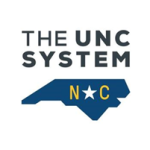Research
Our research seeks to enable a new paradigm in additive manufacturing through research and development in ink-based organic and hybrid electronic materials. Research is performed in a state-of-the-art Ambient Manufacturing of Electronics (AME) laboratory, part of the Carbon Electronics Cluster, which enables both scientific research, such as into the mechanisms of self-assembly and crystallization of functional materials, and engineering developments, including the fabrication of electronic, optoelectronic and photovoltaic devices. AME also carries out engineering efforts to integrate the ambient printing of electronic materials with classical additive manufacturing platforms to enable integrated manufacturing approaches.
Current Projects
US Navy-Office Of Naval Research (6/08/20 – 6/07/23)
PIs: Michael D. McGehee (CU Boulder) & Aram Amassian (NC State)
This project addresses some of the fundamental questions that need to be answered in order to enable the fabrication of exceptionally stable tandems with greater than 30% efficiency. We will study perovskites with low, medium and high bandgaps. We have chosen to emphasize controlling stress and strain in perovskites because only a few manuscripts have been published on the subject despite the enormous importance it has been shown to have in the development of other thin-film electronic and optoelectronic devices. What causes strain buildup in solution-processed perovskite films must be understood at a fundamental level in order to develop stress mitigation strategies that are portable across materials (e.g., different bandgaps), processes (e.g., one-step vs two-step) and from lab-to-fab (e.g., spin-coating vs blade-coating). The need to control stress and strain is multiplied when dealing with tandem devices, which involve many more layers than a single junction device and two or more perovskite layers. The complementary strengths of the McGehee and Amassian teams will be combined to address these outstanding issues.
National Science Foundation (NSF)(3/01/20 – 2/28/23)
PI: Aram Amassian (NC State); Co-PI: Dali Sun; Co-PI: Milad Abolhasani
Hybrid metal halides are a remarkable class of ionic semiconductors with great promise for device applications. Their optical properties can be chemically controlled and they can form single crystals at low temperatures. Single crystals are a highly ordered form of condensed matter and enable high performance electronics and photonics. The aim of this project is to fabricate low-cost, high performance printed devices based on high-quality single crystals and single crystal microarrays of perovskites. The project will focus on direct printing of semiconductor single crystal pixels with chemically-tuned spectral properties on device-ready wafers. The PI will use a co-design strategy to simultaneously tackle single crystal growth and device integration. Direct writing of single crystal transistor and photodetector arrays on wafers will be a crucial step toward next-generation optoelectronic devices and circuits.
US Navy-Office Of Naval Research(4/01/20 – 3/31/23)
PI: Aram Amassian (NC State); co-PI: Daniel Daugherty (NC State)
Our objective is to develop and deploy a multi-pronged approach to delineate and control the fundamental science of the main factors of performance degradation associated with the OSC active layer, such as those related to the morphology, donor-acceptor interfaces, and photochemistry. Instabilities and device degradation related to interlayers, electrodes, and other device aspects will not be investigated. Systems targeted for deep and comprehensive understanding are based on semi-conducting donors and non-fullerene small molecule acceptors (NF-SMA) with high efficiency and representative molecular structures. This coordination is captured and formalized by the creation of the Triangle Organic Solar Cell Alliance (TOSCA), which comprises the groups of W. You (UNC), H. Ade, A. Amassian, D. Dougherty, K. Gundogdu, B. O’Connor, and F. So (NCSU). The four thrusts within TOSCA focus on novel materials synthesis (Thrust I, You), thermodynamics and mechanical properties (Thrust II, Ade, O’Connor), functional imaging of interfaces and morphological characterization (Thrust III, Amassian, Dougherty), and spectroscopic characterization of device physics and defects (Thrust IV, So, Gundogdu). The aim of Thrust III is to identify and visualize the morphological and chemical origins of degradation in state-of-the-art OSC materials consisting of polymer donor and NF-SAM.
National Science Foundation (NSF)(2/15/20 – 1/31/23)
PIs: Harald Ade (NC State) and Wei You (UNC-CH); co-PI: Aram Amassian (NC State)
Organic photovoltaic (OPV) technology has the potential of significant economic impact due to its unique features such as flexibility, low weight, and short energy payback time. In order to achieve greater commercial application, OPVs need to address significant technology challenges in large area device efficiency, stability, and benign/sustainable and safe production. This project will explore scalable, environmentally benign, sustainable and operator-safe ink-based processing methods to produce large scale OPV devices in ambient air conditions. The success of this project will contribute to the transformation of the Nation’s energy infrastructure and help transition OPV technology to become a sustainable energy transformation technology that reduces fossil fuel use and reduces greenhouse gas emissions. The participating graduate and undergraduate researchers will benefit from the interdisciplinary nature of this project and will gain broad exposure to topics of material science, polymer chemistry, device physics and obtain marketable skills for careers in science and engineering. This work is embedded in the activities of the Organic and Carbon Electronics Laboratory (ORaCEL) at NCSU. Overall, the interdisciplinary nature of the research and its societal significance provides significant opportunities for educational outreach and curriculum development.
Sony (8/15/20 – 8/14/21)
PI: Kenan Gundogdu (NC State); co-PI: Aram Amassian
The overarching goal of this research project is to develop a hybrid platform which can create a high density of triplet excitons via singlet fission, transport these excitons over long distances, and manipulate them for various functionalities. We will use a hybrid platform, including conjugated organic molecules, to enable singlet fission to create triplet excitons, and a highly ordered organic/inorganic perovskites to transport these triplets across unprecedented long distances toward nodes where these excitons can be further manipulated.
UNC System Office (7/1/20-6/30/23)
PI: Milad Abolhasani (NC State); co-PI: Aram Amassian (NC State)
This interdisciplinary proposal seeks to develop a transformative advanced (nano)manufacturing technology that weaves key pieces of fundamental and applied research with expertise from some of the most important threads of the North Carolina state economy. This UNC-ROI project aims to address several significant challenges in the areas of Energy, Environment, and Advanced Manufacturing in North Carolina by uniquely merging its strengths in Power Electronics, Academic Research and Education, Entrepreneurship, and Diversity. The product of this interdisciplinary research project will be a transformative technology for continuous synthesis of application-ready semiconductor nanocrystal (quantum dot, QD) inks for direct utilization in next-generation solar cells (single-/multi-junction), optoelectronic devices, displays/lighting, and bioimaging technologies in a cost- and energy-efficient manner.
National Science Foundation (NSF)(6/15/20 – 5/31/22)
PI: Elizabeth Dickey (NC State/Carnegie Mellon); Co-PIs: Reza Ghiladi, Milad
Abolhasani, Frank Scholle, Aram Amassian (NC State)
The goal of this research project is to develop synthesis and processing routes to optimize the efficacy of titania-based nanoparticles for inactivating SARS-CoV-2 surrogate coronaviruses. The chemistry and stoichiometry of titania particles are tuned through a novel flow-synthesis processing route and subsequent thermal annealing to make the material photoactive in the visible-light range of the electromagnetic spectrum. Such light activation leads to the production of reactive oxygen species, which are believed to be central to the antiviral activity of such oxide materials. Being able to control and optimize the antiviral activity of materials such as titania, which can easily be coated onto surfaces or integrated into fibers, can have direct and immediate impact on the production of antimicrobial coatings and personal protective equipment (PPE). As such, the research results are proactively directed towards groups researching and developing PPE materials for the COVID-19 pandemic. The graduate students involved in the research are team-mentored in a highly interdisciplinary and societally relevant research activity that spans materials research, photochemistry, virology, and materials manufacturing.
National Science Foundation (NSF)(9/15/21 – 8/31/24)
PIs: Aram Amassian (NC State), David Mitzi (Duke), Jim Cahoon (UNC-CH)
Hybrid materials, incorporating both organic and inorganic components, are currently being engineered to create new materials with properties controlled by nanoscale composition and morphology. The Research Triangle Research Experience for Undergraduates (RT- REU) will leverage the strength of collaborative research on hybrid materials, specifically hybrid perovskites, together with the integrated nanotechnology tools of the RTNN to provide a state-of-the-art research experience on a timely research topic that has direct and tangible technological applications (e.g. solar cells, lighting, lasers). Undergraduate participants in this program will conduct novel research under the guidance of an experienced faculty mentor at UNC-Chapel Hill, NC State University, or Duke University. A heavy emphasis during recruiting will be placed on students from underrepresented groups as well as those who have limited opportunities to pursue research at their home institutions, aiming for 75% of participants to meet these demographics. In addition to the in-lab research experience, student activities include synchronous and asynchronous instruction in hybrid perovskites and nanoscopic characterization techniques, professional development and enrichment activities, networking and social activities, and experience with oral and written communication of their research. Each REU participant will be also paired with another participant working in a similar area at a different institution in the REU site collaboration. This integrated program will enhance inter-institutional collaboration, advance research projects, and provide a diverse research experience for REU participants.
National Science Foundation (NSF)(9/01/21 – 8/31/22)
PI: Aram Amassian (NC State); Co-PIs: Natalie Stingelin & Emile Gruber (GTech); Terri
Long (NC State) & Michael McGehee (CU Boulder).
The vision of the proposed ERC for Green and Climate Resilient Built Environments (Green CRiBs) is to enhance the climate-resilience of our society by improving indoor temperature stability as a means of dramatically increasing passive survivability, environmental justice, and providing a pathway to accelerate energy system decarbonization. The Green CRiBs ERC planning grant activities will focus on identifying cutting-edge, sustainable, engineering-based innovations in transparent envelope materials and enabling smart manufacturing technologies that will transform how natural and artificial light, heat and energy are managed in the built environment. Window and transparent envelope technologies leveraging innovations in super-insulating materials and novel light management paradigms will enable dramatic reduction of the overall need for active cooling/heating in buildings and agricultural greenhouses, while maximizing access to safe temperatures for both human living and economic activity, including food production. Green CRiBs is envisioned as an essential strategy for addressing climate change and environmental equity through energy savings and grid protection, while catalyzing innovation in the $0.42 trillion glass/window industry and multiple sectors it serves, and training the next generation of diverse, convergence- and innovation-minded engineers to solve complex societal problems.
We are very grateful for the financial support of our research from our current and prior sponsors:



